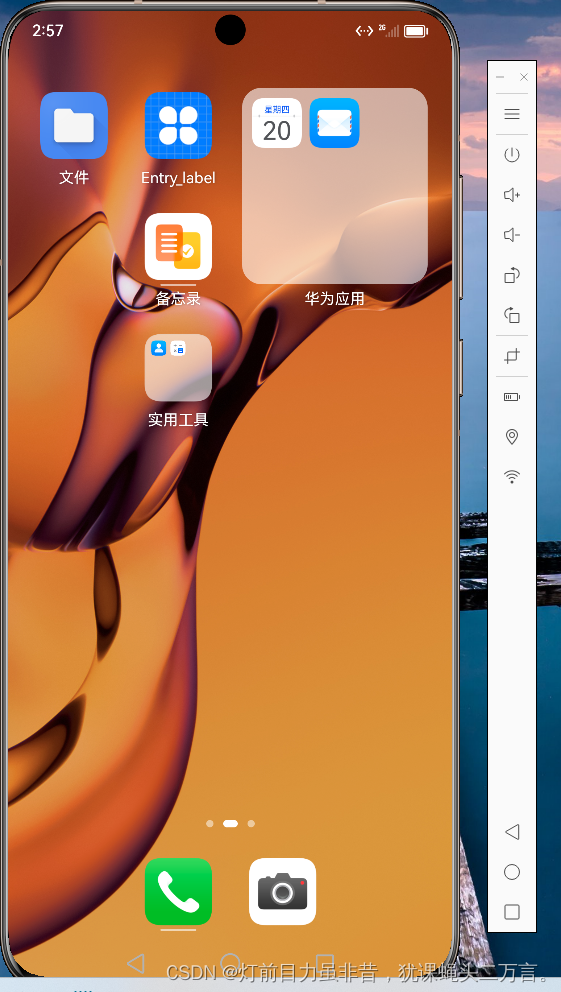本文主要是介绍Cleaning the Phone,希望对大家解决编程问题提供一定的参考价值,需要的开发者们随着小编来一起学习吧!
题目:
Polycarp often uses his smartphone. He has already installed n applications on it. Application with number i takes up ai units of memory.
Polycarp wants to free at least m units of memory (by removing some applications).
Of course, some applications are more important to Polycarp than others. He came up with the following scoring system — he assigned an integer bi to each application:
bi=1 — regular application;
bi=2 — important application.
According to this rating system, his phone has b1+b2+…+bn convenience points.
Polycarp believes that if he removes applications with numbers i1,i2,…,ik, then he will free ai1+ai2+…+aik units of memory and lose bi1+bi2+…+bik convenience points.
For example, if n=5, m=7, a=[5,3,2,1,4], b=[2,1,1,2,1], then Polycarp can uninstall the following application sets (not all options are listed below):
applications with numbers 1,4 and 5. In this case, it will free a1+a4+a5=10 units of memory and lose b1+b4+b5=5 convenience points;
applications with numbers 1 and 3. In this case, it will free a1+a3=7 units of memory and lose b1+b3=3 convenience points.
applications with numbers 2 and 5. In this case, it will free a2+a5=7 memory units and lose b2+b5=2 convenience points.
Help Polycarp, choose a set of applications, such that if removing them will free at least m units of memory and lose the minimum number of convenience points, or indicate that such a set does not exist.
Input
The first line contains one integer t (1≤t≤104) — the number of test cases. Then t test cases follow.
The first line of each test case contains two integers n and m (1≤n≤2⋅105, 1≤m≤109) — the number of applications on Polycarp’s phone and the number of memory units to be freed.
The second line of each test case contains n integers a1,a2,…,an (1≤ai≤109) — the number of memory units used by applications.
The third line of each test case contains n integers b1,b2,…,bn (1≤bi≤2) — the convenience points of each application.
It is guaranteed that the sum of n over all test cases does not exceed 2⋅105.
Output
For each test case, output on a separate line:
-1, if there is no set of applications, removing which will free at least m units of memory;
the minimum number of convenience points that Polycarp will lose if such a set exists.
Example
inputCopy
5
5 7
5 3 2 1 4
2 1 1 2 1
1 3
2
1
5 10
2 3 2 3 2
1 2 1 2 1
4 10
5 1 3 4
1 2 1 2
4 5
3 2 1 2
2 1 2 1
outputCopy
2
-1
6
4
3
Note
In the first test case, it is optimal to remove applications with numbers 2 and 5, freeing 7 units of memory. b2+b5=2.
In the second test case, by removing the only application, Polycarp will be able to clear only 2 of memory units out of the 3 needed.
In the third test case, it is optimal to remove applications with numbers 1, 2, 3 and 4, freeing 10 units of memory. b1+b2+b3+b4=6.
In the fourth test case, it is optimal to remove applications with numbers 1, 3 and 4, freeing 12 units of memory. b1+b3+b4=4.
In the fifth test case, it is optimal to remove applications with numbers 1 and 2, freeing 5 units of memory. b1+b2=3.
题解:
#include<iostream>
#include<sstream>
#include<string>
#include<queue>
#include<map>
#include<set>
#include<vector>
#include<stack>
#include <utility>
#include<algorithm>
#include<cstdio>
#include<cmath>
#include<cstdlib>
#include<cstring>
#include<iomanip>
#include<time.h>
int INF=0x3f3f3f3f;
using namespace std;
long long a[200005],b[200005],a1[200005],a2[200005];
int main()
{int t;cin>>t;while(t--){memset(a1,0,sizeof a1);memset(a2,0,sizeof a2);long long n,m; scanf("%lld %lld",&n,&m);long long num=0;for(long long i=1;i<=n;i++){scanf("%lld",&a[i]);num+=a[i];}for(long long i=1;i<=n;i++) scanf("%lld",&b[i]);if(num<m){cout<<-1<<endl;continue;}long long s1=1,s2=1;for(int i=1;i<=n;i++){if(b[i]==1) a1[s1]=a[i],s1++;if(b[i]==2) a2[s2]=a[i],s2++;}sort(a1+1,a1+1+s1);sort(a2+1,a2+1+s2);long long sum=0;for (long long i=1;i<=s1;i++) sum+=a1[i];long long j=s2,i=0;long long ans=INF;while(i<=s1){while(j>=1&&sum<m){sum+=a2[j--];}if(sum>=m){ans=min(s1-i+2*(s2-j),ans);}sum-=a1[++i];}cout<<ans<<endl;}
}
这篇关于Cleaning the Phone的文章就介绍到这儿,希望我们推荐的文章对编程师们有所帮助!






